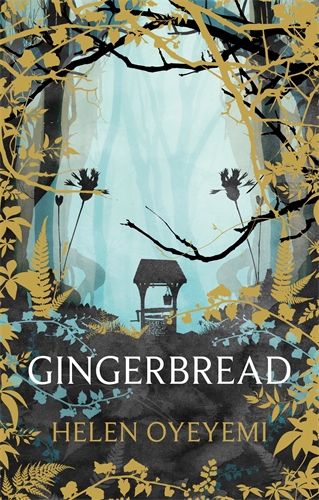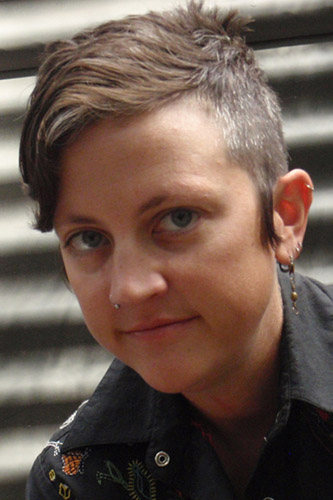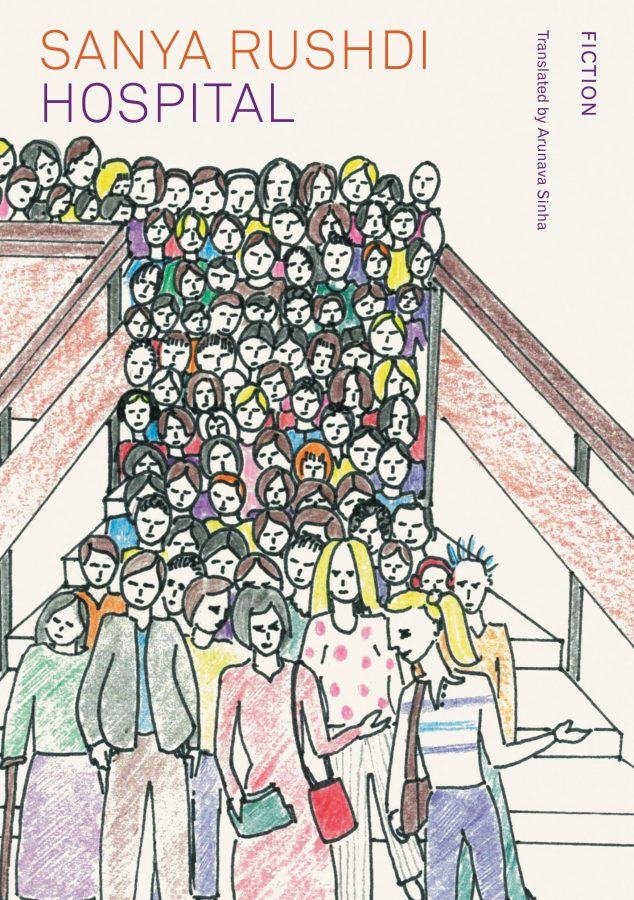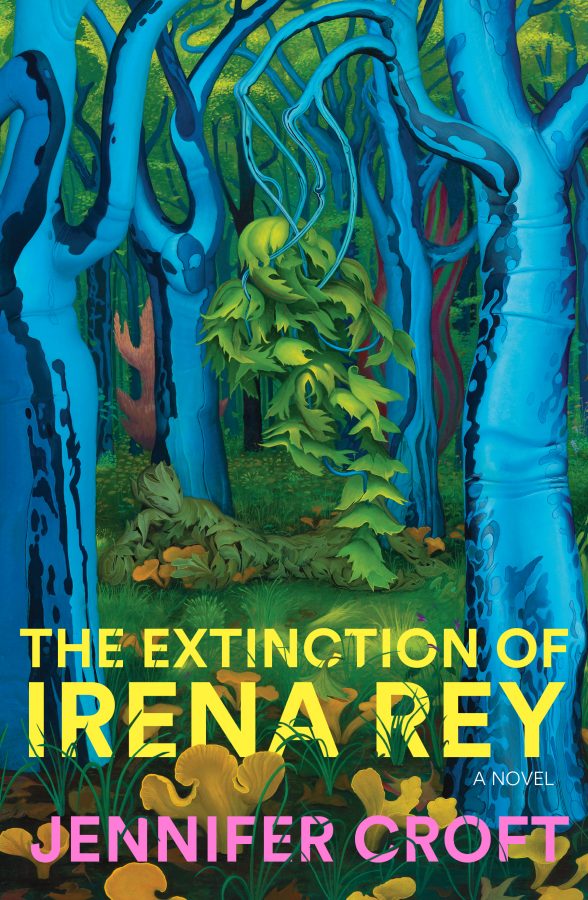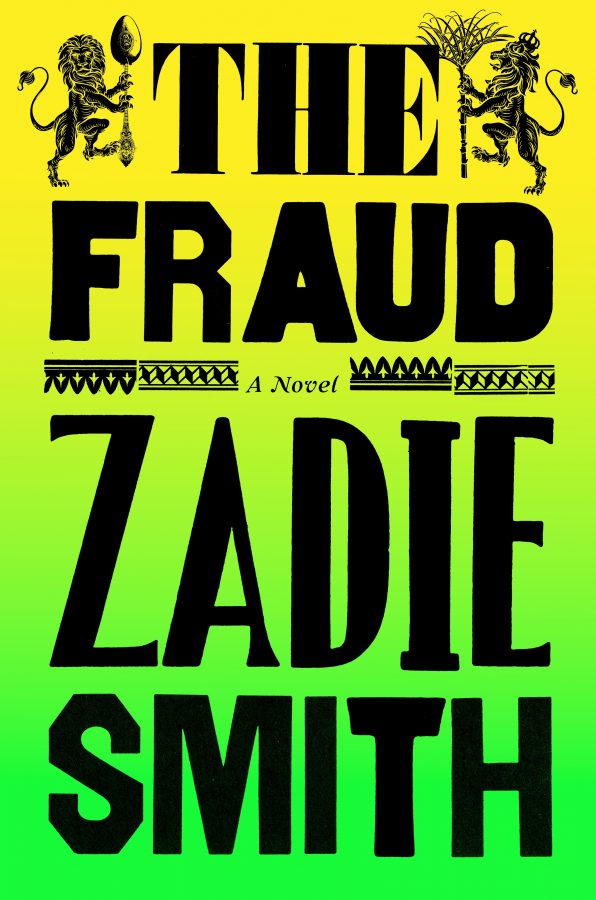In the preface to his 1956 collection, Italian Folktales, Italo Calvino quotes a Tuscan proverb: ‘The tale is not beautiful if nothing is added to it.’ Embellishment is part of the deal; the storyteller’s play and skill bring fresh excitement to the pleasure of revisiting familiar material, allowing for the possibility of surprise, betrayal, or ambush. In recounting a folktale, Calvino argues, ‘a regard for conventions and a free inventiveness are equally necessary’.
In this, her sixth novel, Helen Oyeyemi continues her fascination with fairytales and folktales (the two forms are distinct, if you want to get all Aarne-Thompson-Uther, but she employs both). From the title, Gingerbread immediately signals that the world into which we’ll be drawn is a familiar one, with familiar patches of light and shadow: a warm kitchen, Hansel and Gretel, our fear for lost children tempered by the expectation of their clever escape. But because this is Oyeyemi, we also expect surprises.
Like her last novel, Boy, Snow, Bird (2014), Gingerbread is structured around three female characters. We first meet Harriet Lee, the maker of gingerbread, then her daughter Perdita, who is addicted to the stuff though it makes her ill, and finally Harriet’s mother Margot, whose interventions uncover Perdita’s diagnosis of coeliac disease. The women form a close but secret-keeping family with its origins in the possibly-imaginary nation of Druhástrana, all now living in the UK. These women are less a classic maiden-mother-crone constellation, and more a slice of modern Britain, a diaspora family tending at once to damaged roots and stunted branches.
In the first lines of Gingerbread, we’re told that Harriet’s gingerbread is ‘not comfort food,’ and because this is a fairytale, we know this is also our storyteller, stating her intentions to the reader. This gingerbread, we’re told, will not be nostalgic either: ‘no hearkening back to innocent indulgences and jolly times at nursery. It is not humble, nor is it dusty in the crumb.’
The first part of the novel is introductory, focused on the hardworking Harriet, whose attempt to find her way into the hearts of her daughter’s school’s ‘Parent Power Association’ by bribing them all with her legendary gingerbread provides a ready dose of class-conscious humour. Things soon turn dark; Harriet arrives home to discover Perdita unconscious from an apparent suicide attempt. She survives the attempt but loses her voice, and to bring her back from her chrysalid coma, Harriet promises a story: the tale of her own provenance.
In Perdita, she-who-is-lost, Oyeyemi extends the interest of her earlier novels in the rootless child, the seeker-after-identity, the young woman on the cusp of transformation. (It’s partly that obsession with female transformation that makes her stories fairytales.) Since the girl is all but voiceless, the rest of the book consists largely of Harriet’s story, with interjections from the rather sarcastic dolls that surround Perdita in her bed.
Oyeyemi constructs a story-within-a-story, though the voice does change to address the reader from a few other positions, at which points I found myself wishing she’d committed to another point of view. The demanding pace of a recount rushes us through the story. The choice of third person, Harriet’s cautious character, and Perdita’s near silence combine their distancing effects. I often turned back when I felt I’d lost concentration, only to discover that there were no breadcrumbs behind me. Gingerbread offers a deeply unconventional narrative: a series of entanglements, a wood in which the reader is in constant danger of becoming lost. But ‘Hell,’ as Harriet says towards the end of her tale, ‘why insist on pinpointing who was who and what is what and when was when?’
Transformations are everywhere in this novel, geographical, personal, and class. Oyeyemi never lets us forget that mobility operates on vectors of privilege and displacement, that while fortune might change in a moment, it is structured over lifetimes and generations. Gingerbread’s play with the Hansel and Gretel story sent me back to the Grimm version, in which the children were sent away by their parents (the mother only becomes a stepmother in later versions) because of a famine so bad they could not afford to feed them. In case you needed to be reminded that poverty and displacement were real problems, those kids got clever because it was that or starve.
For a decent setting of pre-industrial poverty, we turn to the homeland of Druhástrana, which is located somewhere between Zembla, Uqbar, and Oz, or through the looking-glass that haunts Boy, Snow, Bird. The inhabitants of Druhástrana are poor farmers in a more or less feudal agrarian state, a landscape decorated by a collage of whimsy: a giant shoe, a jack in the box, a well. Here comes the folktale, the magic contract that could carry us out of our peasant drudgery. But this feudal state is not just imaginary, as it also stands for contemporary modes of inequality.
Margot, the eldest of the matriarchal triad, sinks by her marriage to tenant farmer Simon, and is disowned by her wealthy father. In her recollections, Harriet speaks of her mother as a romantic, but Margot seems more ruthless than that, climbing back to prosperity through strategic use of family connections, eventually finding success as a slightly mystical decorator. Sudden changes of fate are provided by a lottery. Daughter Harriet is sent to the capital city to work in a gingerbread factory. Harriet becomes a ‘gingerbread girl,’ working in ‘an authenticity theme park’ for wages that turn out to be false; it feels like an anti-fairytale, until she and her mother are rescued by wealthy relations and make the move to Britain.
Oyeyemi will never run out of material, even if she does not stray far from the fairy- and folktale source. Previous novels have formed on the scaffolds of Bluebeard (Mr Fox), Snow White (Boy, Snow, Bird), Punch/Pinocchio (several of the stories in What is Not Yours is Not Yours, but especially ‘is your blood as red as this’); transformative foodstuffs have even made previous appearances (the lokum in her short story ‘drownings’, and Miranda’s pica in White is for Witching). Gingerbread proves just as rich in possibility.
We meet a Gretel eventually, a changeling who appears in said well; there are crumbs and sendings-away. But Oyeyemi is too much of a bowerbird to pause on one item, preferring to collect treasures to her elaborate nest rather than settle in it. Incongruities abound, and the story is gathered up from diversions, tangents, parentheses – Oyeyemi’s project is not coherence but elaboration.
Just as the potential threat of suicide is quickly tidied away early on, scenes are removed before they can be fully digested; Oyeyemi is keen on maintaining agility. If Perdita is described as ‘in danger of losing her sense of corporeality,’ Harriet as someone who ‘doesn’t register as distinct,’ there’s a risk that such slippages will undermine the story.
‘To find the moral, the message, the meaning of a folktale… is a risky business; it is like stating the meaning of a fish, the uses of a cat. The thing you are talking about is alive. It changes and is never quite what you thought it was, or ought to be,’ wrote Ursula Le Guin.
The thing about Oyeyemi is that nothing in her world is ever one thing. Gingerbread might begin as a traditional food, but it is served up again in many guises: ‘both trick and treat,’ she says. It is used as poison and as portal, to impress potential friends and bribe librarians, to mark a coming-of-age, smooth over a conflict, secure a trust, and to flee; and nor does it escape commodification. Such slipperiness is exciting, but it is maddening to hold.
This book is also a puzzle, full of literary, political, and narrative clues. Emily Dickinson makes an appearance, though not her gingerbread recipe (which can be found online: unstable quantities of molasses, of course). Balzac shows up, as is compulsory these days, and there’s a professor who praises Zola’s ability to ‘frisk you and hit you ten times for each flaw you denied being in possession of,’ in a theoretical interlude that feels a little forced.
Maybe it’s because I found them first, or because I happen to favour the form, but I can’t help feeling that Oyeyemi’s fleet-footedness is better suited to short fiction, which is more tolerant of structural play. In the rush of her inventiveness she sometimes loses sight of the other half of Calvino’s balance sheet, the regard for convention. It’s not a case I’m used to making, and I make it here not because I want more ease of consumption, but for the possibilities that structure offers, like suspense and depth of feeling.
And yet, questions of origin are entanglements. Take ginger: it originated in South India and/or South-East Asia, was brought by Arab traders to Europe at least two thousand years ago then lost hold of the place along with the Romans, was reintroduced along the Silk Road in the eleventh century, by which point gingerbread was a thing (it seems to have been a Central Asian invention, possibly Armenian), and became hugely popular in Britain by the time of Elizabeth I, who is credited with the innovation of gingerbread men (though I doubt she baked them herself). Incidentally, Nigeria’s one of the major exporters of ginger these days.
Story moves around the world in the same way food does, by complicated routes of exchange and delight. The folk stories of Europe connect closely with those of India, Central Asia, East Asia and Africa. Scientists have more recently been using genomic data to map these exchanges, identifying movement across geographical and linguistic barriers. Folk stories are not just traditions but living things, shifting with the times, connecting some groups and separating others, moving nimbly through the world. In this context, the apparent embellishment of the storyteller begins to look natural, as if what we call postmodernism is simply adaptation.
Helen Oyeyemi is herself a sort of fairytale. Publishing her first book, The Icarus Girl, at 19, she’s been celebrated as a prodigy, as a triumph of both British and Nigerian literature, her success floated on a shifting set of identities, the magic mostly due to her extraordinary talent.
Since 2013, she has lived in Prague, and the city is a clear influence on Druhástrana. In an interview with the Guardian earlier this year, Oyeyemi was asked about her relocation and spoke about being able to shop around for nations to call home for a while. ‘Maybe I’m one of the last of a generation to be able to live in Europe,’ she said, a sorrowful acknowledgement of a changing continent, and a nod to the mobility her own vectors of privilege and displacement afford.
Although part of the current trickle of talent away from the UK, Oyeyemi might also be the last of a generation to write as modern European Britons. Though she has taken pains in interviews to resist the influence of race as a core concern, she is always interested in identity, and awake to transformation and boundary. If she’s not a product of her origins, she’s a product of her time.
There’s a moment in Gingerbread when Oyeyemi mocks Brexit directly:
Druhastrana’s Great Referendum (the one that had divorced it from all formal international relations and most informal ones too) had been brought about by a general taking of umbrage against all the foreigners who kept coming in… What Druhastranians wanted was to keep things simple and concentrate on upholding financial inequality.
Being burned by Brexit might ruin the cake, but it can’t destroy a recipe that belongs to the people. Beneath the Tory chaos, the Britain of Bake Off remains, the cookbook utopia where a wealth of diversity is shared between generations and cultures, where the many by-products of colonisation are turned to common use. It’s not a stretch to argue that folk stories might play a role in helping Britain to find its way out of the woods and towards a more honest membership in the global community. For all her apparent detachment and playfulness, I suspect Oyeyemi of toying with this possibility. She is the kind of writer who knows that stories help.
There is a serious feminist at work here, as there has always been: she gives us the house as a trap, the need for freedom, the power of female friendship, the way that mythologies can become obstacles, the barriers of class, the pressures of performative success, the abusive and controlling relationship, the hiding of one’s past from one’s descendants, the secret despair, the queering of what we imagine to be reality.
Oyeyemi runs her own race as a writer, making a place for herself without apparent regard to convention or literary fashion. But this is not to say she’s not paying attention. The affection for tangents, parentheses and filigrees is a position, a running-around-waving type of stand taken against the austere and reserved in traditional (white) British writing. Her writing disorients, yes, but it does so in order to upend our assumptions about story and hierarchy. Circling back to the question of the lost girl, I think of what she’s doing to her readers, and of Sara Ahmed’s notion of disorientation in Queer Phenomenology; such a strategy can bring about fresh perspectives and unexpected juxtapositions. There is a tradition of this in British writing too, expressed most emphatically by Angela Carter.
If Oyeyemi’s work continues that great writer’s project, it does so in nonlinear ways. Carter’s celebration of the revolutionary feminist potential of the fairytale has many inheritors, and it takes many voices to break down the hierarchy between ‘serious’ realism and everything else. Carter always saw and celebrated the meaning-making of women’s work, collective work, folk work, saw its capacity to be turned to revolutionary ends, and fought on the side of the imagination. ‘The ‘old wives tale’ positively parades its lack of verisimilitude,’ she wrote, counting this among its greatest virtues.
‘She doesn’t say she hopes you’ll enjoy it; you will enjoy it,’ that opening description of Harriet Lee’s gingerbread goes on. It’s ‘like noshing on the actual anatomical heart of somebody who scarred your beloved and thought they’d got away with it… ground to ash and shot through with darts of heat, salt, spice and sulphurous syrup…’
It sounds, and is, delicious. But I’m not sure this book lives up to its bloodthirsty promises. Of the many writers now working in the fairy- and folktale realms, Oyeyemi has not the lust of, say, Carmen Maria Machado, or the greedy gore of Intan Paramaditha. She is too light on her feet to leave the surface for long, and unlike Boy, Snow, Bird, Gingerbread doesn’t anchor itself to a narrator who might carry us through its world. Her playful embellishment is virtuosic, but here it is almost too much.
The way might be thicketed, but Gingerbread is an enchantment that offers much to the attentive and adventurous reader. It is a process of unpacking and revisiting as much as one of navigation. It is rich, in its way; it has more than its share of sugar-rush sentences, and the lack of verisimilitude is glorious. It is great fun to be taken for a ride in Oyeyemi’s bright and curious mind. There is feeling here, and it does avoid the saccharine. Moments of emotional depth appear, like Gretel’s well, but they are quickly covered over with a fresh diversion, never quite disturbing the impression this novel gives of being more icing than cake.
References
Sara Ahmed, Queer Phenomenology, Duke University Press 2006.
Arifa Akbar, ‘Helen Oyeyemi: ‘I had such a lovely time dating different cities’’, The Guardian 2019.
Bortoli et al, ‘Inferring patterns of folktale diffusion using genomic data’, PNAS August 22, 2017 114 (34) 9140-9145.
Italo Calvino, Italian Folktales, tr. George Martin (preface tr. Catherine Hill), Harcourt Brace Jovanovich, 1980
Angela Carter, Angela Carter’s Book of Fairy Tales, Virago 2005
Jacob and Wilhelm Grimm, ‘Hansel and Gretel’, tr. DL Ashliman.
Ursula K Le Guin, Dancing at the Edge of the World: Thoughts on Words, Women, Places, Grove 1988
